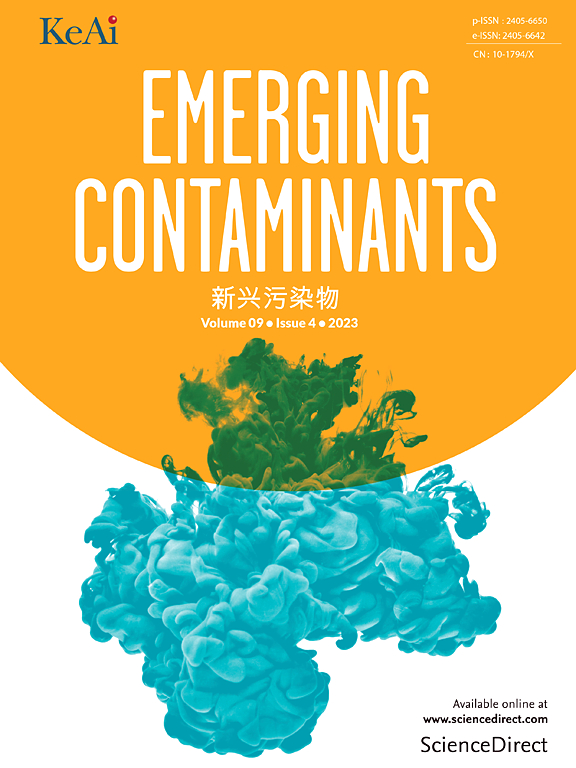成都城乡结合部城市化影响下土壤重金属污染的三维评价
IF 6.9
2区 环境科学与生态学
Q1 ENVIRONMENTAL SCIENCES
引用次数: 0
摘要
城市化,特别是农业用地向城市地区的转变,显著影响土壤质量,特别是重金属的浓度和分布。研究了成都市城乡结合部土壤中As、Cd、Cr、Pb、Ni、Zn 6种重金属的空间分布特征,重点研究了从农用地到城市化用地再到农用地的过渡区域。研究分析了重金属的三维空间分布,评价了城市化对土壤污染的影响。结果表明,与基岩和深层土壤相比,表层1 m土壤重金属含量较高。采用次生与初级相比值(RSP)和风险评估代码(RAC)相结合的地球化学评价方法,对这些金属的生态风险进行了评价。结果表明,Cd是最危险的污染物,在老城区(N2、双流)和河流汇合处(N6、华阳)的污染水平特别高。旧城区土壤不仅重金属总量较高,而且重金属交换形态所占比例也较高。研究建议,应制定以城市土壤复垦和风险缓解为重点的针对性土壤修复策略。本文章由计算机程序翻译,如有差异,请以英文原文为准。
Three-dimensional assessment of heavy metal contamination in soil affected by urbanization at the urban-rural interface of Chengdu
Urbanization, particularly the transformation of agricultural land into urban areas, significantly impacts soil quality, especially concerning the concentration and distribution of heavy metals. This study investigates the spatial distribution of six heavy metals (As, Cd, Cr, Pb, Ni, and Zn) in soils at the urban-rural interface of Chengdu, focusing on areas transitioning from agricultural land to urbanized land and back to agricultural land. The study analyzes the three-dimensional spatial distribution of heavy metals and assesses the impact of urbanization on soil contamination. It was found that the top 1-m soil layer exhibited higher concentrations of heavy metals compared to the bedrock and deeper soil layers. A combination of geochemical assessments, including the Ratio of Secondary Phase to Primary Phase (RSP) and the Risk Assessment Code (RAC), was used to evaluate the ecological risks posed by these metals. The findings indicate that Cd is the most hazardous contaminant, with contamination levels being particularly high in older urban areas (N2, Shuangliu) and at river confluences (N6, Huayang). Soils in the old urban area not only had a higher total amount of heavy metals but also had a higher proportion of its heavy metal exchangeable form. These areas face significant ecological risks, and the study suggests that targeted soil remediation strategies should be developed, with a focus on urban soil reclamation and risk mitigation.
求助全文
通过发布文献求助,成功后即可免费获取论文全文。
去求助
来源期刊

Emerging Contaminants
Medicine-Public Health, Environmental and Occupational Health
CiteScore
10.00
自引率
6.70%
发文量
35
审稿时长
44 days
期刊介绍:
Emerging Contaminants is an outlet for world-leading research addressing problems associated with environmental contamination caused by emerging contaminants and their solutions. Emerging contaminants are defined as chemicals that are not currently (or have been only recently) regulated and about which there exist concerns regarding their impact on human or ecological health. Examples of emerging contaminants include disinfection by-products, pharmaceutical and personal care products, persistent organic chemicals, and mercury etc. as well as their degradation products. We encourage papers addressing science that facilitates greater understanding of the nature, extent, and impacts of the presence of emerging contaminants in the environment; technology that exploits original principles to reduce and control their environmental presence; as well as the development, implementation and efficacy of national and international policies to protect human health and the environment from emerging contaminants.
 求助内容:
求助内容: 应助结果提醒方式:
应助结果提醒方式:


